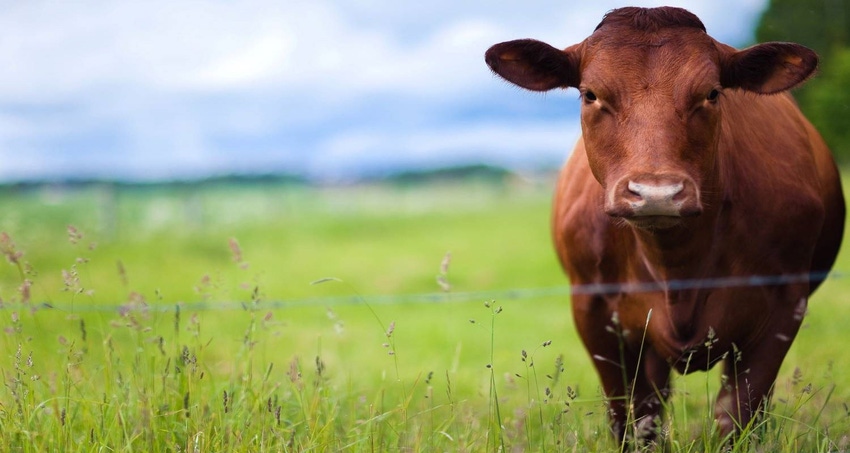Be prepared for more open cows
Heat stress will leave an impact on cattle herds this summer.
August 24, 2022

On top of high fuel costs, current inflation, and high input costs, beef producers have had to deal with drought and extreme heat. Heat stress is normal for cattle in Kentucky because most of our cattle graze endophyte-infected fescue but the early onset this summer may cause some serious issues with pregnancy rates and calving rates.
Heat stress has profound impacts on many biological processes that can lead to poor reproductive rates. Prior to estrus, heat stress reduces follicle growth, hormone production, and oocyte (the egg) competency. Combined, this reduces fertilization rates. Once fertilized, heat stress also reduces the growth of the newly formed embryo. This reduction in the growth of an embryo is likely the result of increased cell death and/or a smaller corpus luteum (CL) that producers less progesterone. This reduced growth rate and increased embryonic cell death leads to more embryos lost during the first week of gestation. Unfortunately, heat stress continues to impact embryonic growth through the first 21 days which also increases the loss of these early pregnancies.
Issues with heat stress continue throughout gestation. Exposure of early pregnancies (day 24-45) to heat stress reduces fetal growth and can result in the loss of up to 20% of these pregnancies. Heat stress reduces placental efficiency meaning the placenta has a reduced ability to deliver nutrients to the developing fetus. Toward the end of pregnancy, extreme heat stress can impact placental hormone production which can lead not only to premature calving but also to drastically reduced development of the mammary glands impacting lactation. So, heat stress impacts beef females from the beginning to the end of pregnancy. Ugh.
What does this mean for beef producers right now? First and foremost, have pregnancy diagnosed in your herd. Contact your herd veterinarian to set up a palpation or ultrasound. Pregnancy can also be diagnosed by taking a blood sample and either mailing the samples to a diagnostic lab or by using the new chute-side blood test kit from IDEXX (test is called Alertys and they are available from most veterinary supply companies). The blood tests are accurate but consultation with your herd veterinarian is always recommended.
Pregnancy rate can dip to as low as 50-60% when prolonged heat stress occurs during the breeding season. What options does a producer have if a breeding disaster occurs? If you have a split calving season or calve year-round, the decision to keep or cull open females is a little easier. Simply roll cows younger than 5 years old over to the next breeding season. The decision is harder if you only have cows calving in the spring. Currently, cull cow prices are high and many market analysts suggest that cull cows prices may remain high this fall. If the cost of replacement breeding stock remains reasonable, then the optimum decision would be to cull and replace for this year.
Most years, the decision to cull open cows isn’t easy. Some would argue to cull all females that cannot conceive in her environment because her genetics did not match her environment or level of management. But genetics for reproduction are lowly heritable, so genetics are a very small contributor to reproductive failure. Also, if you only have a drought and excessive heat stress once every 5-10 years, should you penalize a cow whose genetics match the environment most of the time? To make the decision even more challenging, often cows that are culled are replaced with bred two-year olds, who are inherently reproductively inefficient, will require additional feed inputs, and may take two years to reach optimum productivity. In the long run, what really costs more? Interesting problem to think about and certainly not one answer for all producers.
The markets, and where we are in the cattle marketing cycle, should impact the decision. Currently, cow numbers are extremely low in the US which normally results in higher calf prices. I got some incredible advice from an experienced beef producer a few years ago. Pap had run over 1,000 cows for decades and his strategy was when prices are high, own as many cows as you can and sell as many calves as you can. Extend the calving season if you need to because every calf sold was profitable. Pap didn’t care to keep open females at all. However, when prices were low, Pap controlled the calving season tightly and culled cows that didn’t conceive. Pap’s philosophy was when times were lean be efficient and when times were good, be productive. Good advice. It appears we are in an excellent position in the cow cycle with low number and impending higher feeder calf prices. Might be time to keep as many as you can afford to prepare you to take advantage of the higher cattle prices on the horizon.
Source: University of Kentucky, who is solely responsible for the information provided and is wholly owned by the source. Informa Business Media and all its subsidiaries are not responsible for any of the content contained in this information asset.
You May Also Like


.png?width=300&auto=webp&quality=80&disable=upscale)
